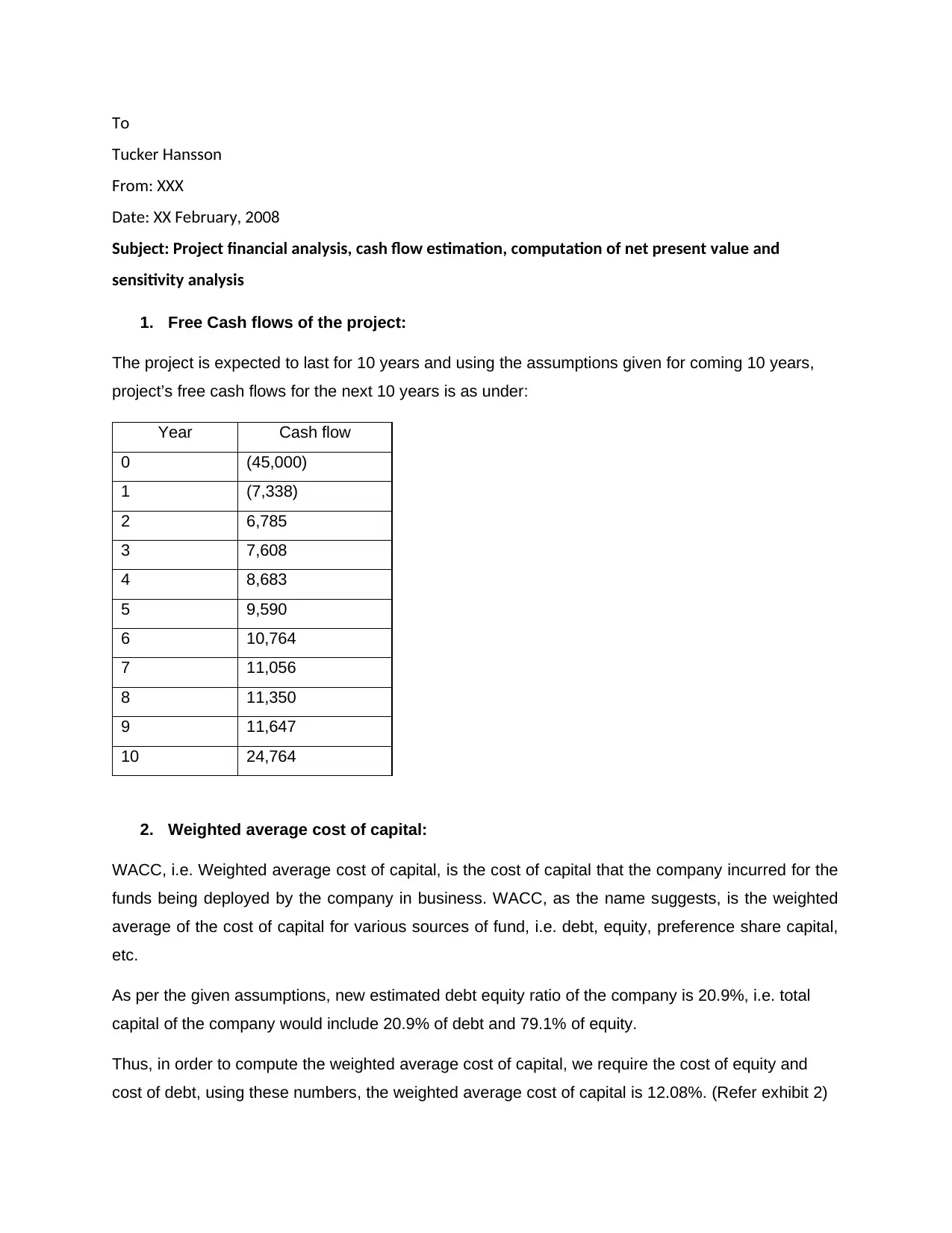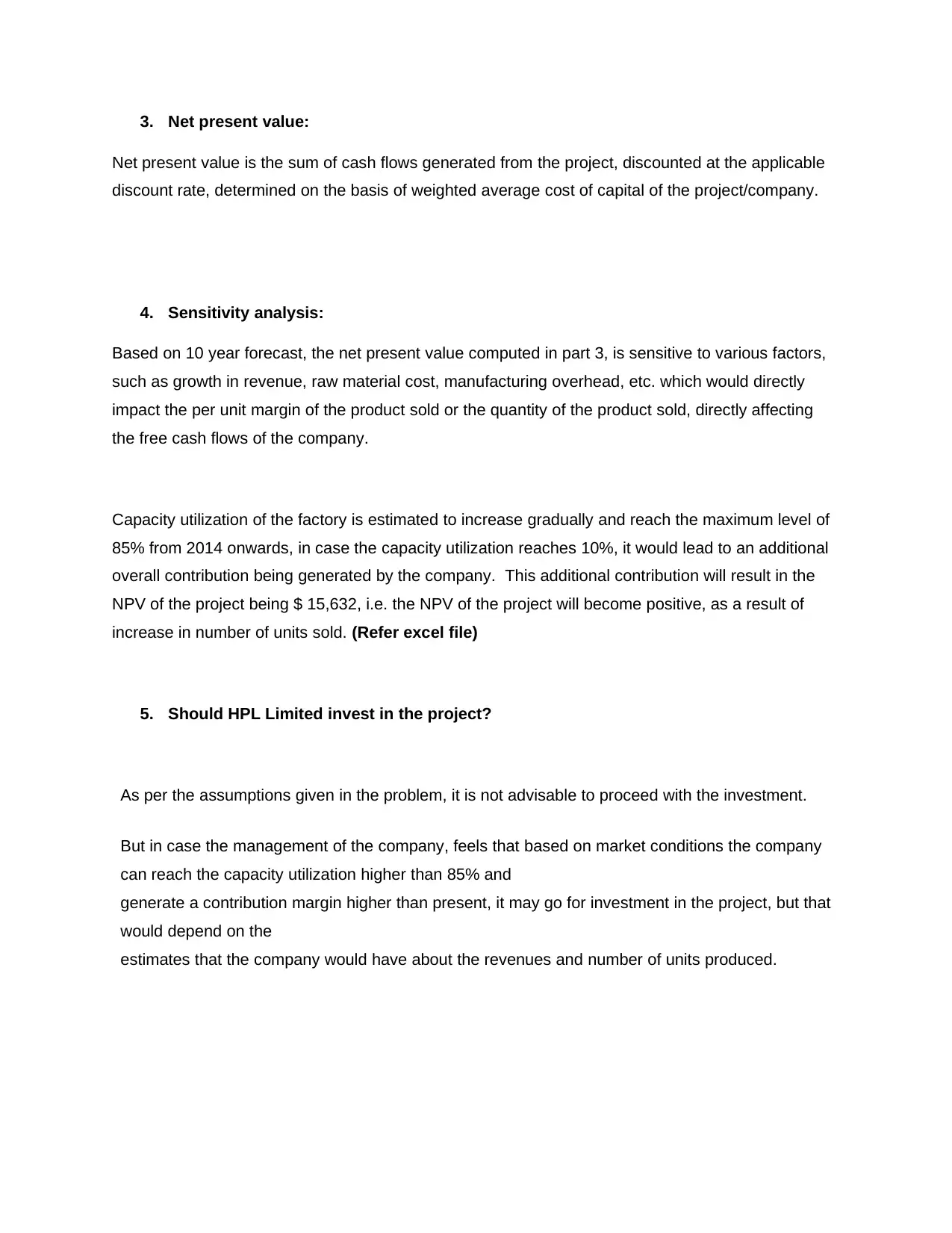Project Financial Analysis, Cash Flow, NPV, and Sensitivity Analysis
VerifiedAdded on 2022/11/30
|2
|547
|478
Homework Assignment
AI Summary
This assignment analyzes an investment project for Hansson Private Label (HPL) Limited, evaluating its financial viability. The analysis includes the estimation of free cash flows over a 10-year period, calculation of the weighted average cost of capital (WACC), and determination of the net present value (NPV). The document also performs sensitivity analysis to assess the project's vulnerability to changes in key variables such as revenue growth, raw material costs, and manufacturing overhead. The analysis concludes with a recommendation on whether HPL Limited should proceed with the investment, considering the project's potential and associated risks. The assignment includes a detailed memo and supporting exhibits to justify the financial analysis.
1 out of 2






![[object Object]](/_next/static/media/star-bottom.7253800d.svg)